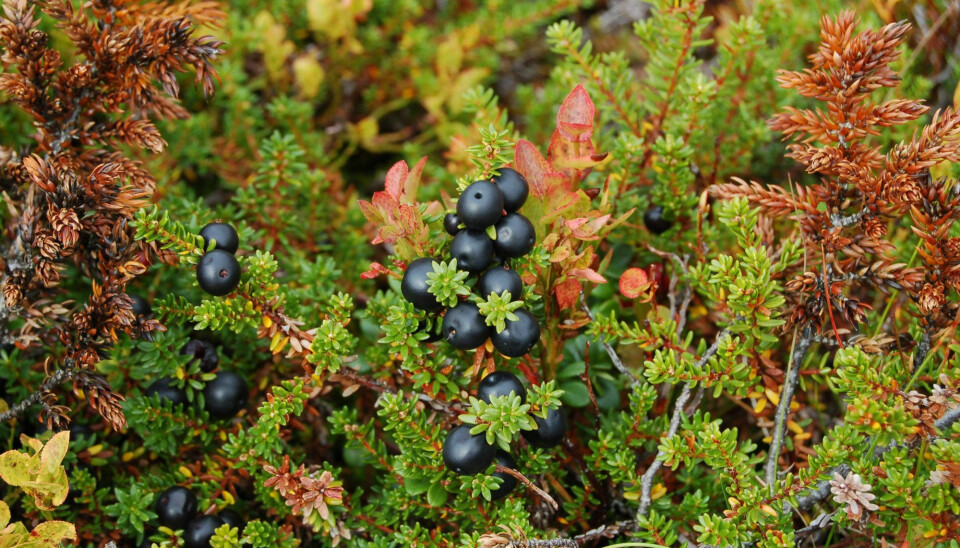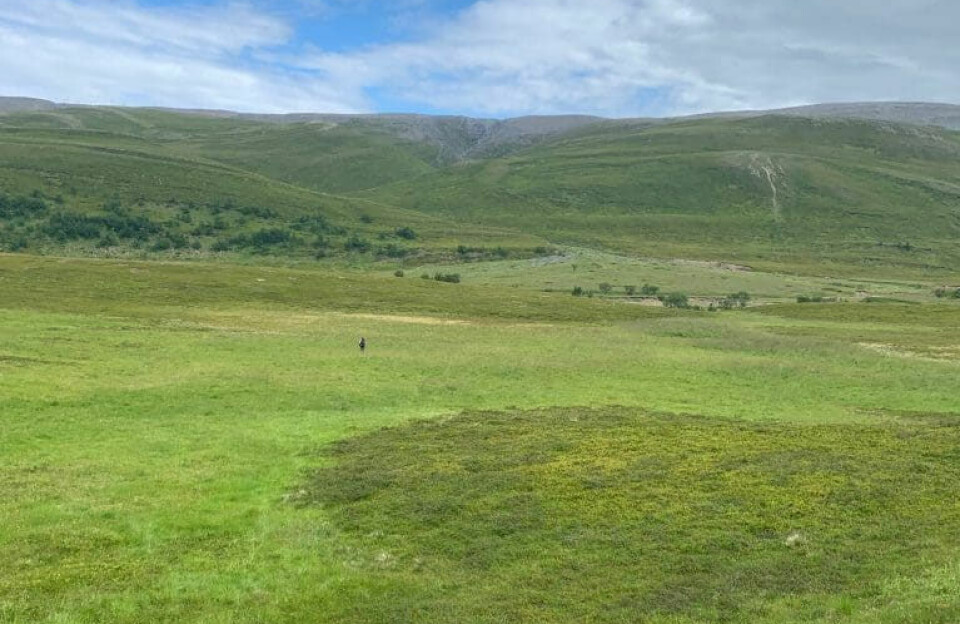
The rise of crowberry in northern Norway: an ecological challenge
In northern Norway, a significant ecological transformation is underway, drawing attention from scientists and local communities alike. Crowberry, a native evergreen plant, is spreading throughout the region, significantly altering the landscape and the ecosystem services it provides.
By: Kathrine Torday Gulden // Norwegian Institute for Bioeconomy Research
Known for its glossy black berries and antioxidant properties, crowberry (Empetrum nigrum) is not just a plant with health potential, but also a growing concern.
Over the past 50 years, heathland areas in northern Fennoscandia have undergone significant changes. Shrubs like heather and bilberry, which once comprised 60% and 35% of their respective heathlands, now make up less than 25%. Crowberry has become the dominant plant across nearly all heathland types.
Other vegetation types have also changed considerably. Since the early 2000s, the abundance of crowberry has increased by an average of 60%. This shift has led to what can be described as a “green desert effect”, converting landscapes into vast areas of crowberry.
Leading the investigation into these ecological changes for the past years, is the MONEC project (To manage or not: assessing the benefit of managing ecosystem disservices). This initiative has tracked the significant rise in crowberry’s dominance across twenty reindeer grazing districts in Troms and Finnmark counties.
“By comparing current vegetation with surveys from the 1970s and 2003, we’ve gained valuable insight into the transformation of these areas,” says Dr Kari Anne Bråthen, project manager and professor of ecology at UiT – The Arctic University of Norway.
“There were expectations that a diverse array of plant species—herbaceous, flowering plants and grasses, in other words plants that are essential food sources for a diverse range of wildlife—would become more abundant with the warming climate. This, however, is not what we found. Only woody species have gained in abundance, with crowberry now being by far the dominant plant in the areas we have resurveyed.”

Multiple ecological dynamics at play
While the spread of crowberry coincides with climate change, multiple ecological dynamics may also contribute to its expansion. The spread is notably independent of grazing pressures, challenging traditional viewpoints on vegetation control through natural grazing.
“Climate change could contribute to crowberry’s increasing coverage by creating conditions favourable for evergreen species, with longer growing seasons and milder winters,” says Dr Bråthen.
“That said, one would think warmer and longer growing periods would benefit other native evergreen species in the region too, such as lingonberries. But this doesn’t seem to be the case in crowberry-dominated areas.”
One explanation for this, is that crowberry possesses biological traits that aid its expansion. Among other things, it is clonal: it branches and then roots its branches over vast areas.
The plant also seems to thrive in harsh conditions, and releases biochemicals that inhibit the new establishment of competing plants. This suppression of other plant species creates significant challenges for restoring and maintaining diverse ecosystems.
Great for some but not for others
Crowberries are rich in antioxidants. In Norway, the berries are commonly used in jams, juices, and desserts, and are appreciated for their potential health benefits, including improving vision and boosting the immune system, due to their high content of vitamins and polyphenolic compounds.
However, the plant’s rapid spread is reducing biodiversity, forming large, homogenous areas that lack the variety these ecosystems once had. This presents clear challenges for pastoral systems since herbivores such as reindeer must bypass much more crowberry than before in order to find other food.
“Reindeer in Norway and other northern regions consume crowberry leaves and berries as part of their diet, especially when other food sources are sparse,” says Dr Bråthen. “While crowberry provides some sustenance, the leaves have low nutrient content. Hence it is not a preferred forage plant for reindeer, if they can choose.”
Dr Victoria Gonzalez, adviser at the Svanhovd unit of the Norwegian Institute for Bioeconomy Research (NIBIO), highlights another impact of the crowberry expansion.
“Crowberry’s dominance reduces habitat availability for pollinating insects,” she says. “Unlike flowering plants that depend on insects for pollination, crowberry is wind-pollinated and does not produce nectar to support pollinators like bees. This can lead to a cascade of effects, impacting species that rely on these insects, thereby affecting broader ecological interactions.”
This article was originally published in the Fram Forum. It is republished as part of a partnership between the Fram Centre and the Barents Observer
















